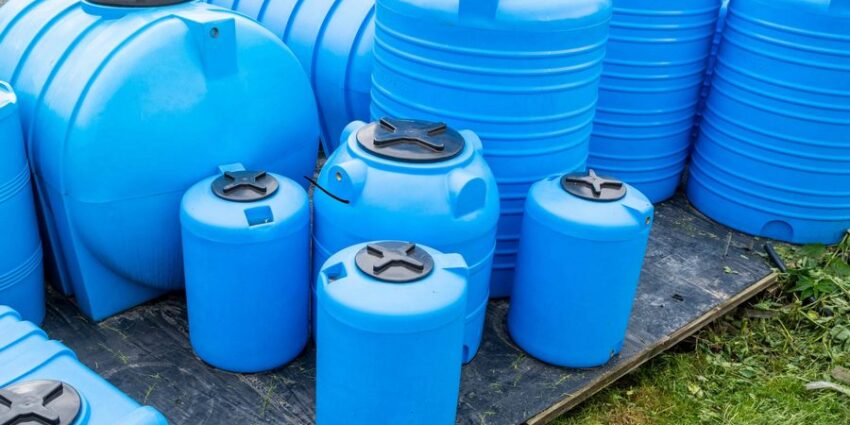Water tanks are essential for storing and supplying water in various settings, including residential, commercial, and industrial areas. However, these tanks can become a breeding ground for bacteria if not properly maintained. Bacterial contamination in these storage units can lead to health risks for individuals who consume or come into contact with the contaminated water. Understanding the role of bacteria in water tank contamination is crucial for effective prevention and treatment. Here, we explore the various aspects of this issue and discuss preventive measures and treatment options used by a professional water tank cleaning company in Dubai.
Bacterial Sources
Bacteria can enter water tanks through various sources, such as contaminated rainwater, external environmental factors, or improper maintenance practices. Some common sources include bird droppings, dead insects, leaves, and other organic matter that accumulate on the tank’s surface or in the surrounding area. Additionally, inadequate disinfection methods or outdated water treatment systems can contribute to bacterial growth within the tank.
Bacterial Contamination Risks
The growth of bacteria in tanks poses significant health risks. Pathogenic bacteria, such as Escherichia coli (E. coli), Salmonella, and Legionella, can cause waterborne diseases, including gastroenteritis, diarrhea, and respiratory infections. These hazards are severe when polluted water is consumed or used for day-to-day activities like bathing and cleaning without proper treatment.
Preventive Measures
Preventing bacterial contamination in water storage units involves implementing a combination of measures, including regular inspection, proper maintenance, and appropriate disinfection procedures. Some key preventive measures include
- Using expert hygiene solutions for regular cleaning of the tank’s interior and exterior surfaces to remove accumulated debris and organic matter.
- Securing the tank with a tight-fitting lid or covering to prevent entry of external contaminants.
- Installing filters at water inlet points to minimize the entry of sediments, insects, and other particulate matter.
- Conducting water quality tests at regular intervals to monitor bacterial levels and promptly identify contamination issues.
- Implementing proper disinfection methods, such as chlorination or ultraviolet (UV) treatment, to kill or inactivate bacteria.
Treatment Options
If bacterial contamination is detected in a tank, immediate action should be taken to treat the issue. The treatment options depend on the extent of contamination and the specific bacteria involved. Some common treatment methods include:
- Shock chlorination: This involves adding a high concentration of chlorine to the water to get rid of bacteria. It is an effective method for eradicating a wide range of bacterial contaminants.
- UV treatment: Ultraviolet light can be used to disinfect the water by damaging the DNA of bacteria, rendering them unable to reproduce. UV treatment is often used as an additional step after primary disinfection.
- Filtration: Filtration systems, such as activated carbon filters or membrane filters, can help remove bacteria from the water by physically trapping them. However, filtration alone may not be sufficient to completely eliminate all types of bacteria.
Regular Maintenance and Monitoring
Prevention and treatment efforts should be accompanied by regular maintenance and monitoring of water tanks. This includes periodic inspection for cracks or leaks in the tank structure, cleaning of sediment and debris, and testing the water quality for bacterial contamination. Additionally, it is essential to follow the manufacturer’s guidelines for tank maintenance and adhere to local regulations and standards related to water quality and safety.
Conclusion
Bacteria is a primary source of water tank contamination. However, by following the above measures and maintaining regular monitoring, we can ensure a safe and clean water supply from the tanks, free of germs and bacteria.

slot online: bataraslot 88 – bataraslot login
http://evergreenrxusas.com/# cialis delivery held at customs
http://maplecarerx.com/# Canadian pharmacy prices
Indian pharmacy international shipping: CuraMedsIndia – Best Indian pharmacy
https://chickenroadslotitalia.com/# vincite e bonus gioco Chicken Road
https://medicexpressmx.com/# Best online Mexican pharmacy
https://medicexpressmx.shop/# Online Mexican pharmacy
tadalafil prescription: Tadalafil tablets – discreet delivery for ED medication
Neurontin online without prescription USA: is gabapentin good for arthritis – affordable Neurontin medication USA
If you’re curious about online slots, Try to play Mate slots and explore a variety of engaging games. The platform offers user-friendly controls and entertaining features suitable for casual play or real-money action. It’s a good starting point for slot enthusiasts.